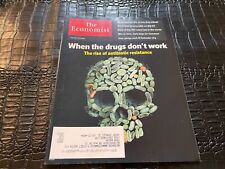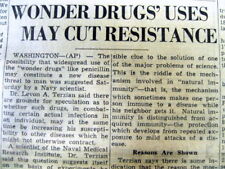
A new study into antibiotic resistance in the journal Antimicrobial Agents and Chemotherapy points the finger of blame squarely at the oral ingestion of antibiotics. Using intravenous or transdermal methods of delivery, say the researchers, could significantly slow the spread of antibiotic resistance.
“For more than 40 years, a few doses of penicillin were enough to take care of deadly bacterial infections,” says researcher Hua Wang of Ohio State University. “But since the 1980s, antibiotic resistance has been spreading rapidly, disabling once-powerful agents, leaving increasing numbers of patients to suffer, and even to die.”
In previous research, the same Ohio State research team found a large cache of antibiotic resistance genes carried by non-pathogenic bacteria in many ready-to-consume food items. They also reported the rapid development of resistant bacteria in new-born infants who had not been exposed to antibiotics, suggesting the gastrointestinal tract played a critical role in spreading resistance.
In the new research, the team inoculated lab mice with either Enterococcus species orEscherichia coli carrying specific resistance genes. The mice were then given tetracycline or ampicillin antibiotics, either orally, or via injection.
Wang found that the oral administration of antibiotics resulted in the rapid rise of resistance genes as measured in the mice’ feces. Resistance spread much less, and more slowly when the mice received antibiotics via injection.
The researchers also found that antibiotic resistance genes were not detectable in mice that had not been inoculated with bacteria containing antibiotic resistance genes,regardless of the route of antibiotic administration.
Wang says it should not be surprising that oral administration would abet the spread of resistance genes, since this route, unlike injection, directly exposes the large population of gastrointestinal bacteria to antibiotics.
The resulting resistant microbes then get transmitted to the environment via the feces. From there, bacteria containing resistance genes again gain entry to the food supply, via livestock, or via produce that has been exposed to manure from industrial livestock, as well as contaminated waste and soil. “Revealing this key risk factor is exciting because we have options other than oral administration,” she concluded.
Related:
Discuss this article in our forum
Intriguing evidence of charitable behavior in bacteria
Medicinal clays may be new weapon against antibiotic-resistant infections
Antibiotics found to have transgenerational effects
Antibiotic oomph: the eyes have it










Comments are closed.